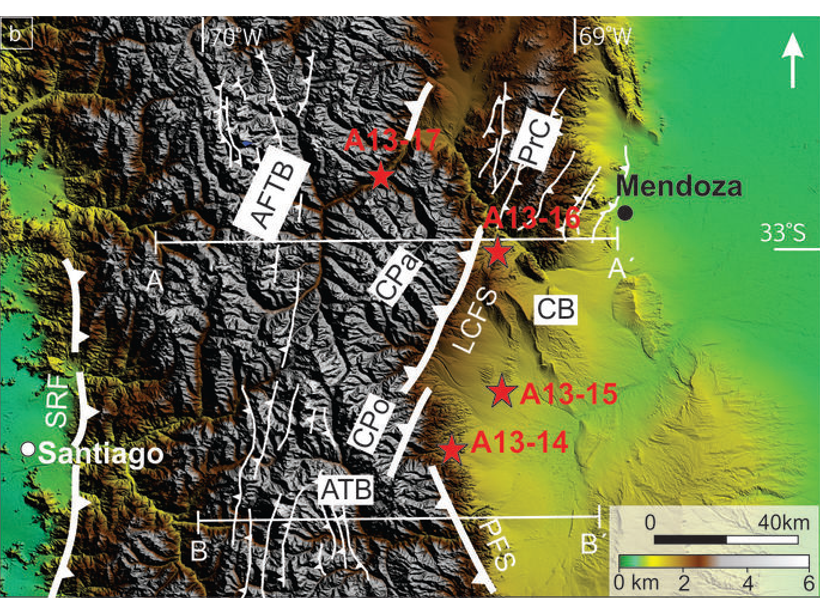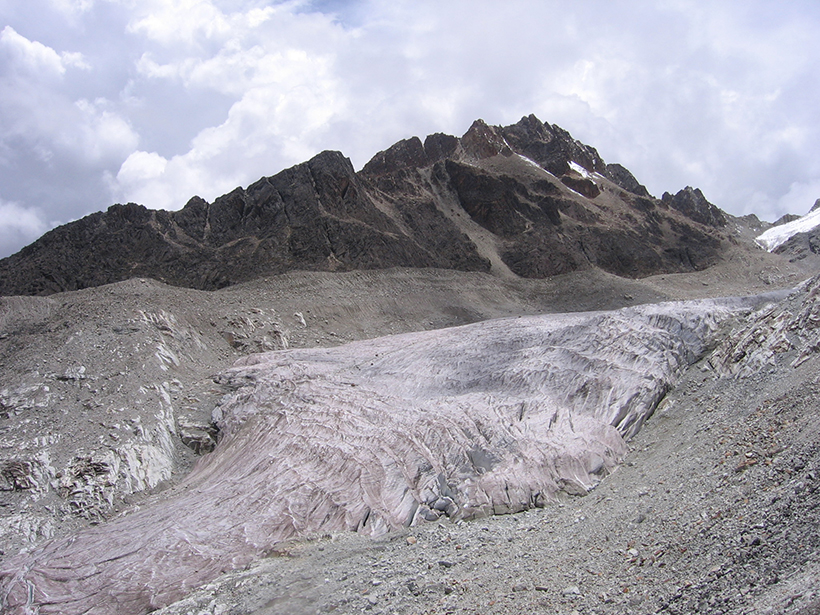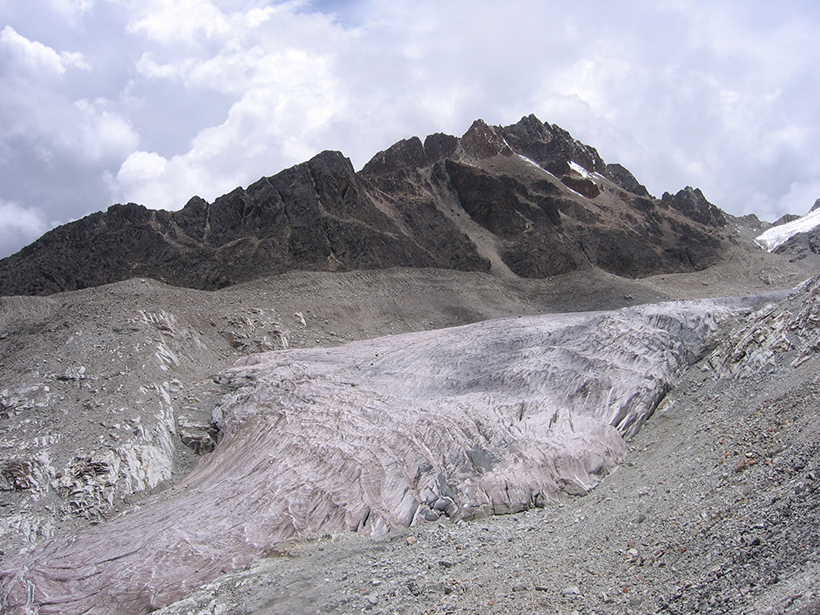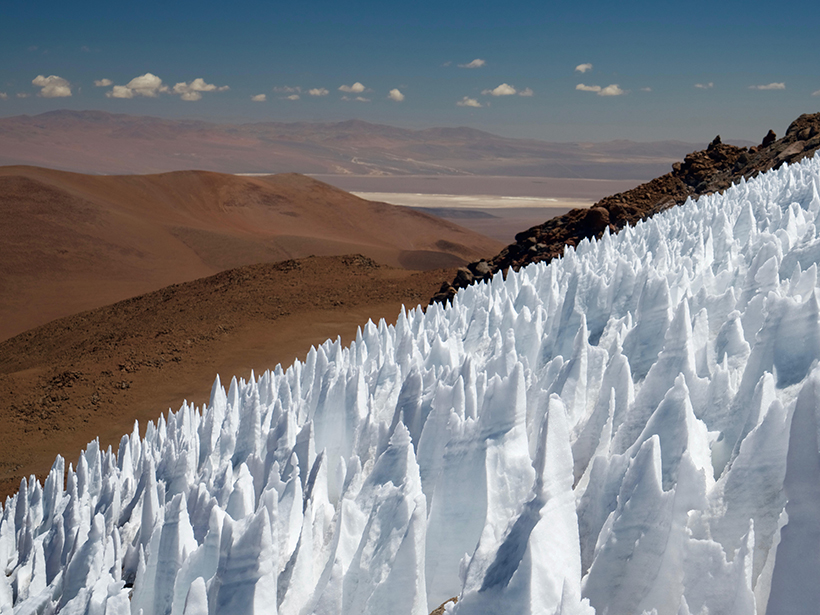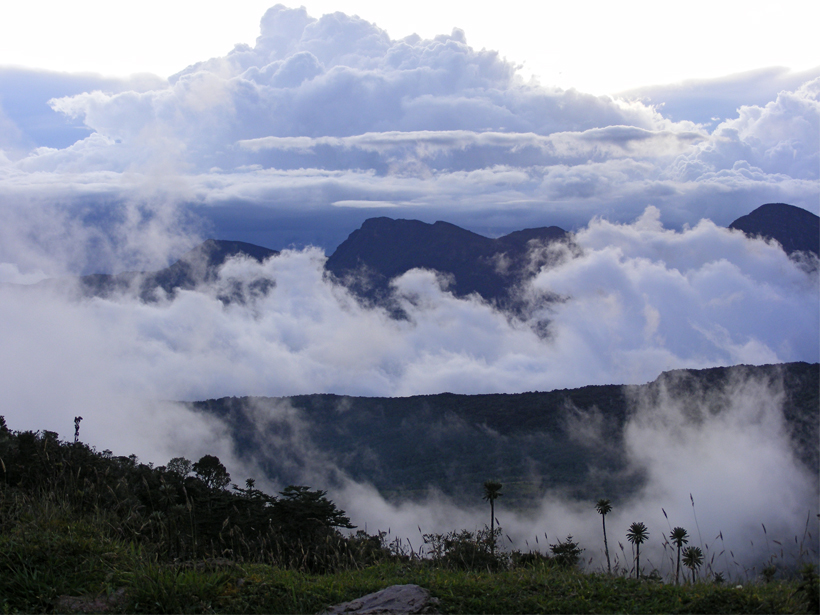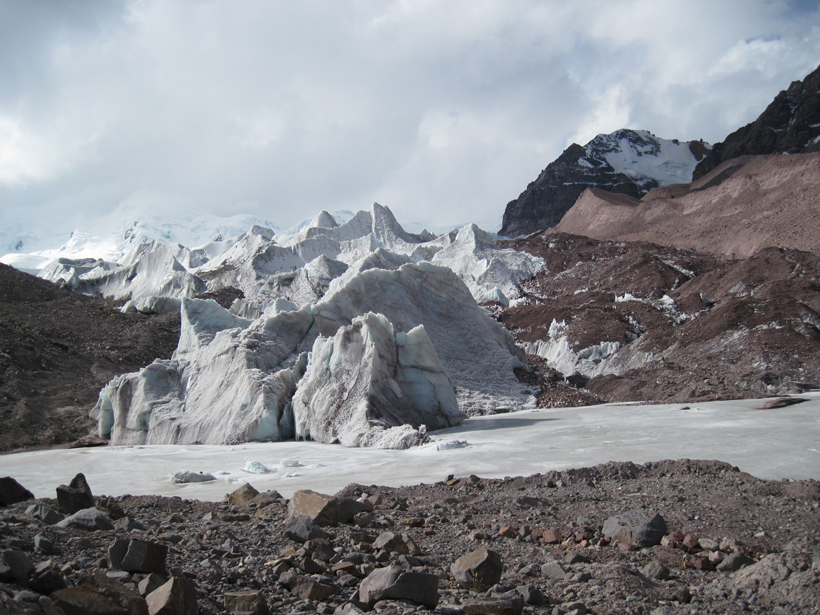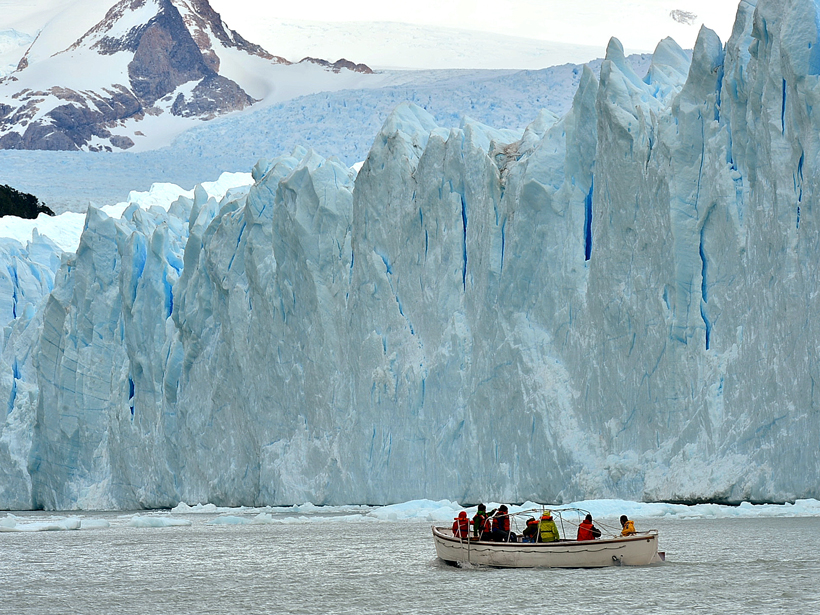Variations in hot spring geochemistry from adjacent mountain ranges with different styles of faulting highlight the influence of crustal-scale structures on circulating fluids in the Peruvian Andes.
Andes
What Controlled the Growth of the Southern Central Andes?
Flat-slab subduction appears to have played a minor role in the growth of the Southern Central Andes, with evidence for eastward migrating deformation.
Los Incendios del Amazonas Contribuyen al Derretimiento de los Glaciares Andinos
Investigaciones recientes revelan que las emisiones de carbono negro producidas por los incendios en el Amazonas causan que los glaciares en los Andes absorban más radiación solar y se derritan más.
Amazon Fires Contribute to Andean Glacier Melting
New research finds that black carbon emissions produced by fires in the Amazon cause glaciers in the Andes to absorb more sunlight and melt more.
Microbes Spotted on Blades of Ice High in the Andes
Researchers discover microbial life on ice spires known as penitentes on the arid, sunlight-blasted upper reaches of Llullaillaco, one of the best earthly analogues for Mars.
The Flickering Sky Islands
In the Andes, islands in the sky flicker, and evolution kicks into high gear.
Role of Continental Arcs in Global Carbon Dioxide Emissions
Continental arcs are a major player in global carbon dioxide emissions, but quantifying that relationship is hard. A new study accepts the challenge on a global scale over 750 million years.
After a Glacier Retreats, Plants Thrive Thanks to Phosphorus
Grasses, small flowers, and mosses colonize glacial till in the Peruvian Andes when researchers apply a phosphorus fertilizer, an ecological surprise with implications for carbon sequestration.
In Patagonian Lakes, Glacial Meltwater Lies Low
A new study reveals key differences in ice-water interactions between glaciers that flow into lakes and glaciers that end in the sea.
GREAT ICE Monitors Glaciers in the Tropical Andes
An international program strengthens glaciological studies in the tropical Andes, promotes collaborative projects, and develops educational programs with local universities.


